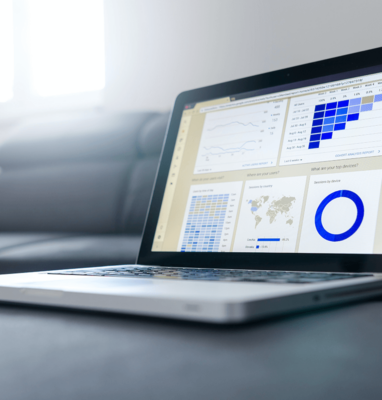What Is Streaming Analytics and Why It Matters?
Last updated: 26 January 2023

Streaming analytics is the process of collecting, analyzing, and presenting data about streaming media consumption. This data provides valuable insights into how users are accessing and engaging with streaming content. It can help you to improve the user experience and optimize your content formats, programming, publishing and delivery.
Why Do We Need Streaming Analytics?
The purpose of streaming analytics is to provide information about how streaming content is being consumed. This data can be used to track the performance of individual videos, event streams, television channels and radio broadcasts. Besides, it can help to understand overall trends and patterns in streaming consumption. This information is valuable for a range of purposes, including identifying popular content, optimizing the service, tuning the content delivery network (CDN), and improving the user experience.
There are many different types of data that can be presented about streaming consumption. And the most common data will depend on the specific needs and goals of the business or organization. Some of the most common data that are presented about streaming consumption include the number of viewers, the most popular titles, the duration of the streams, the devices and platforms that are being used, and the geographic locations of the viewers.
In addition to these basic metrics, streaming analytics can provide more detailed information about trends and the user experience. For example, the average bitrate of the streams, the buffering rates, and the dropout rates. This data can be used to identify potential issues with the streaming service, such as network congestion or playback errors. You can also use it to take corrective action to improve the user experience.
Overall, streaming analytics is an important tool that helps you get insights into engagement, trends and performance, so you can optimize your business and your offerings.
Streaming Analytics at Jet-Stream
Jet-Stream uses cloud and CDN logs to collect the data. This source of data has proven to be more reliable compared to client-side data, since that data can be manipulated or blocked, by ad blockers, tracker blockers or firewalls. Also, client-side data could be intercepted, leaked, or shared with unwanted third parties. Jet-Stream prevents this and guarantees 100% data capturing.
Jet-Stream’s elastic analytics engine gathers logs in real-time and processes this data to represent actual view sessions, instead of bare manifest and video chunk requests. 100% of the data is analyzed, for higher accuracy compared to data sampling and scaling.
What Are The Benefits Of Jet-Stream Real-Time Analytics?
The data is presented to Jet-Stream Cloud users at multiple levels. First of all, traffic usage is analyzed and presented in the portal and this data is made available via the API. Since 100% of the data is captured and 100% of the data is analyzed, this is a reliable source of traffic usage. Without the dependency on third parties for collecting or processing the data.
Second, an intuitive statistics interface is presented, where all the key data is presented in real-time, per period. Total number of viewers, most popular videos and live streams, number of viewers, average watch time, most popular devices, and most popular regions. The data is available via an API for further processing.
Third, a more advanced analytics suite is fed the same data set. In this portal, you can deep dive into sessions, see trends and generate reports. This suite also offers an API for further processing.
Fourth, access to aggregated and processed source logs is available as a real-time feed. So you can integrate your own- or third-party analytics services for advanced processing and analytics.
A great example of advanced data processing is for SVOD services which use this data to calculate the number of total view minutes per month per content supplier. Thus, allowing to share revenues based on the content’s popularity.
Do you want to learn more about our streaming analytics tool? Watch the pre-recorded demo!




